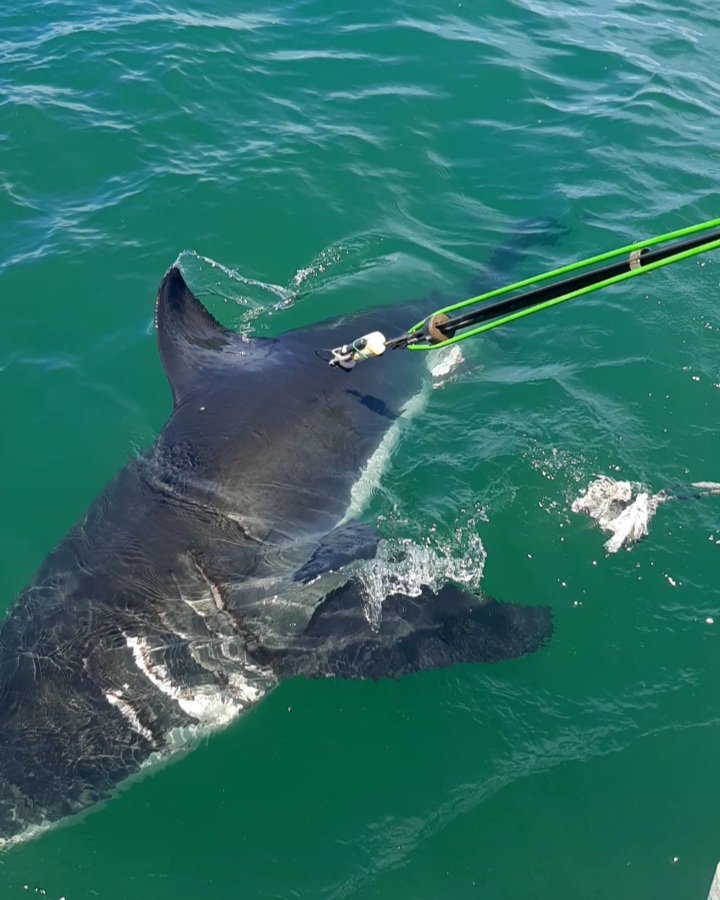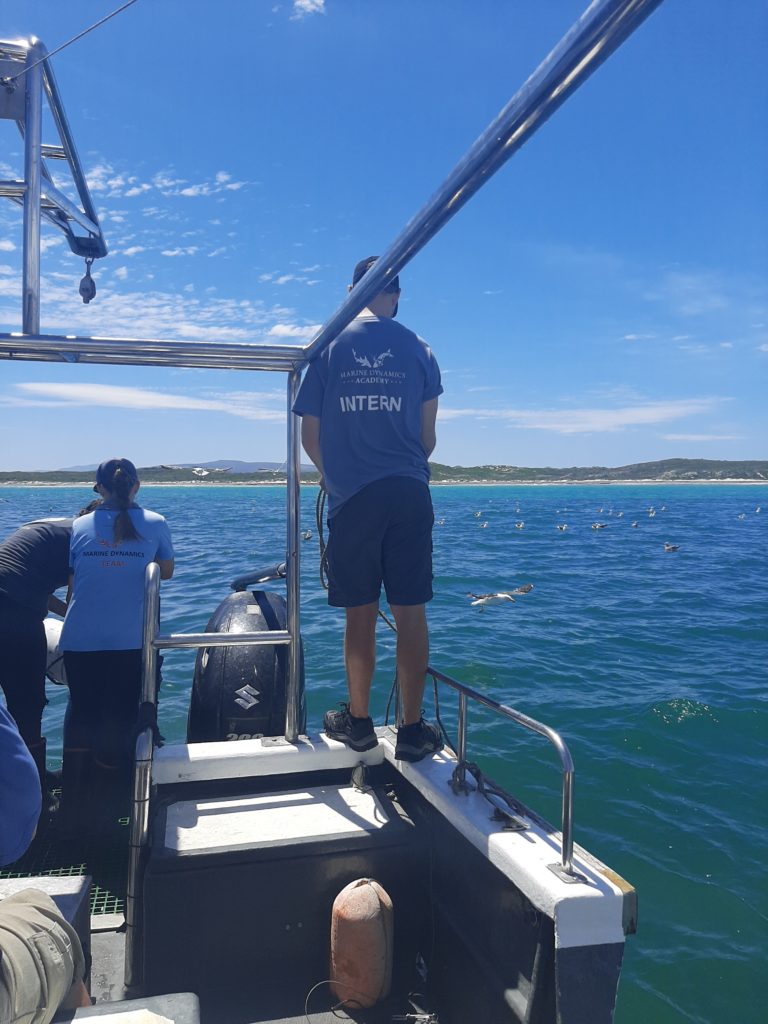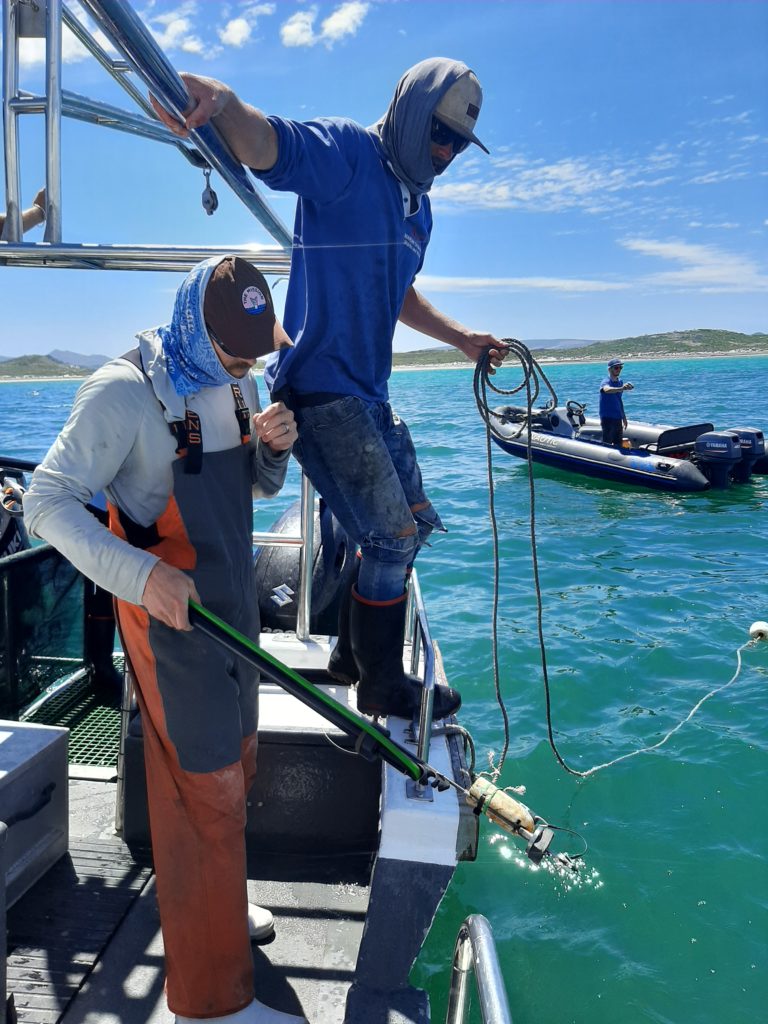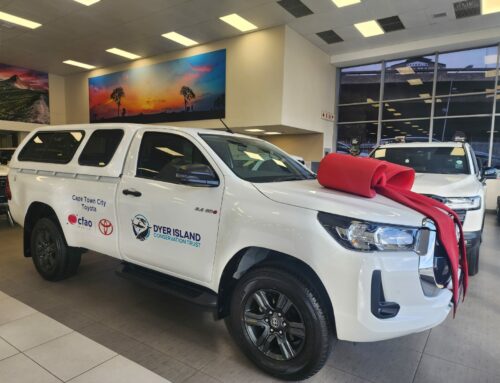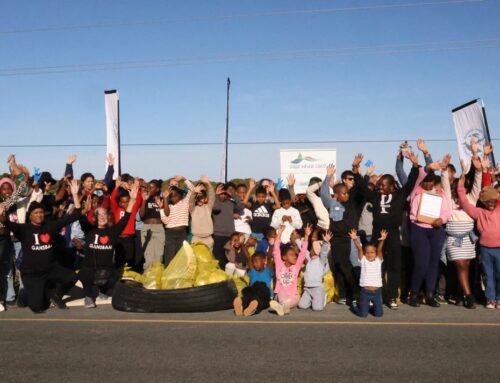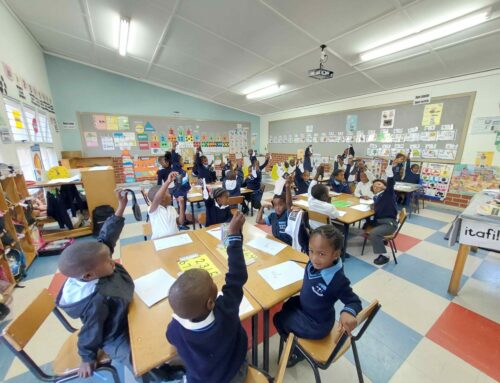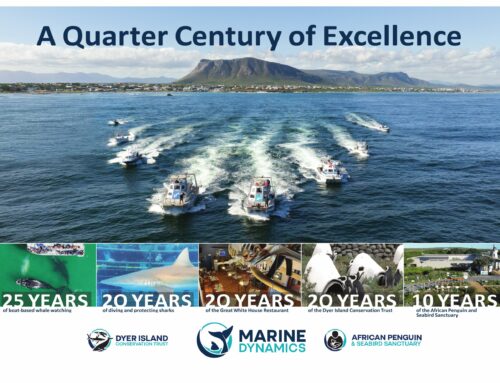– Alison Towner, Marine Biologist, PhD Candidate
The Dyer Island Conservation Trust in Gansbaai is thrilled to announce the successful deployment of an acoustic transmitter onto one of Gansbaai’s most iconic white sharks. The newly re-named “not so Mini” Nemo arrived back in the area on 13 February 2021 and has been catalogued by the crew of Marine Dynamics for the past ten years! We first logged this shark as a young 2.5m male and it is simply incredible to see him grow over the years returning as a healthy 4.0m adult. Mini Nemo was named after the Disney character Nemo, a clown fish with a similar stunted pectoral fin. Two vessels of Dyer Island Conservation Trust vessels launched early on the morning of February 17th, from Kleinbaai harbour, and anchored on the inshore to set about attracting bronze whaler sharks to the boat. This work is for the PhD of Toby Rogers (a collaborative project with Shark Spotters, Acoustic Tracking Array Platform (ATAP) and Save Our Seas Foundation) aiming to quantify the shark species movement ecology and assess their population dynamics in Southern Africa.
The day started very well, with both a male and female bronze whaler successfully tagged by midday. Then, a large black shadow and dorsal fin appeared in the distance, heading straight towards the research boats. Much to everyone’s delight on board, it was the shark we had all hoped to see- Mini Nemo! He arrived and began to slowly circle our vessel, rolling on his side and eyeing out our excited crew while making approaches at the bait. An acoustic tag was attached to his left side, and as we put our hydrophone into the water, we were able to record his tag ID, demonstrating the method to Marine Dynamics Academy intern Maik, from Germany.
This incredible shark then proceeded to stay circling the vessels for another TWO hours – clearly the tag attachment did not faze him at all. At one point a Cape fur seal appeared off the bow and predated on a large octopus, thrashing, and throwing the mollusc around for over ten minutes. We were almost certain the white shark would try to predate on the seal- but to our surprise- he showed zero interest! (lucky seal).
It was a busy field day all round for the Dyer Island Conservation Trust, with our third vessel Lwazi, also out at sea with team Sea Search on board. They were retrieving acoustic loggers (the devices that recently recorded the first ever vocals of a killer whale in SA) and were spoiled to humpback and common dolphin sightings near Dyer Island. Marine ecologist Leigh De Necker along with Brandon Kilbride, were also on board to assist with tagging. Both used to crew on white shark diving vessels in False Bay and both had smiles, stretching from ear to ear, after seeing their first white shark in over three years. Much debate is currently ongoing regarding where white sharks have gone to from Gansbaai and False Bay, but one thing is for certain, the answers lie in the spatial movement data of this species. We look forward to seeing, where Not-so-mini-Nemo goes to from Gansbaai, via the national array of receivers through ATAP.
Special thanks to our shark research sponsors!
Should you wish to sponsor our shark research, please go to: https://dict.org.za/donate/
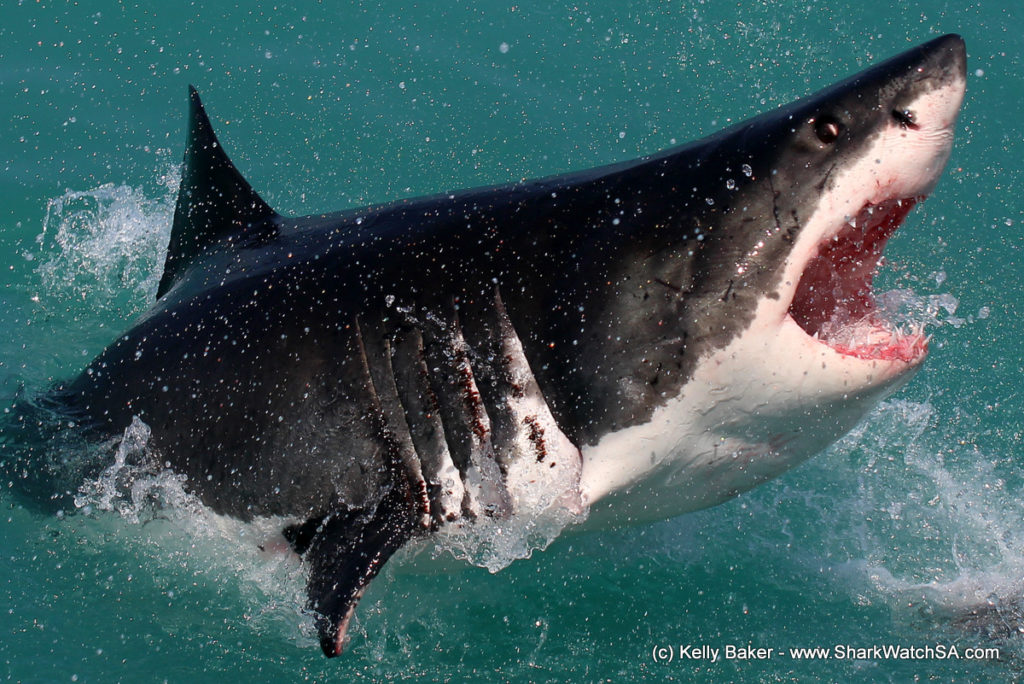
mini nemo
